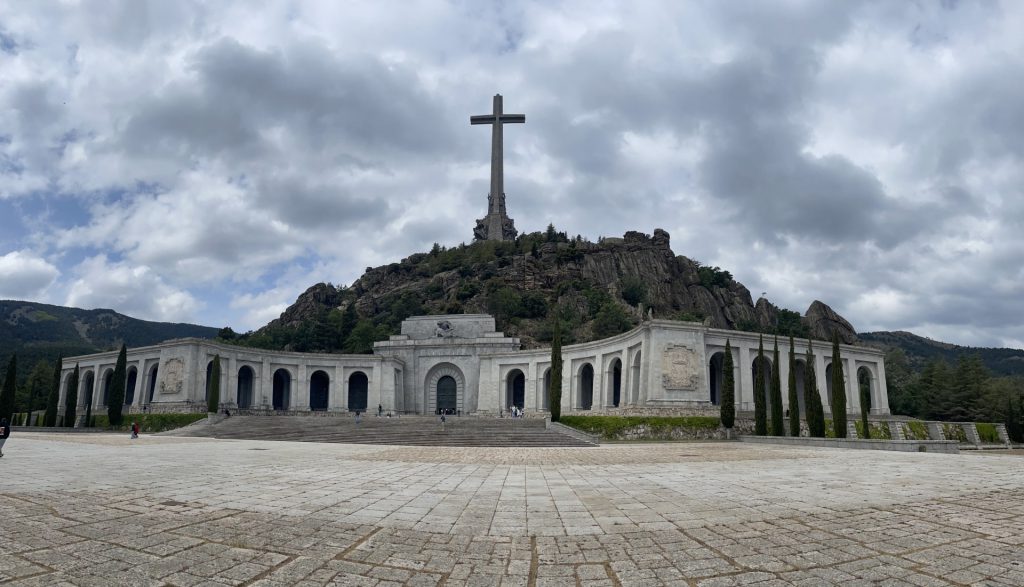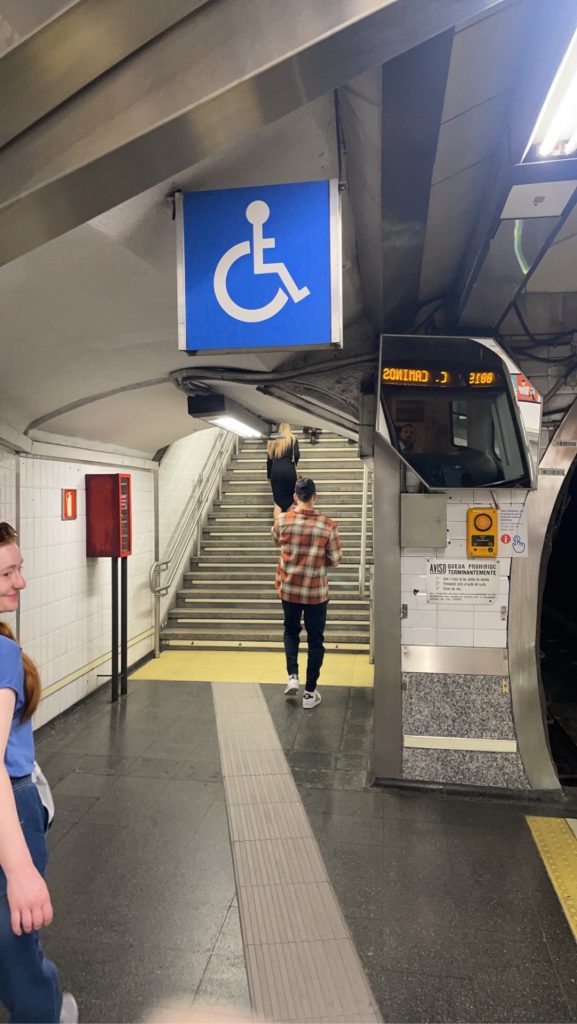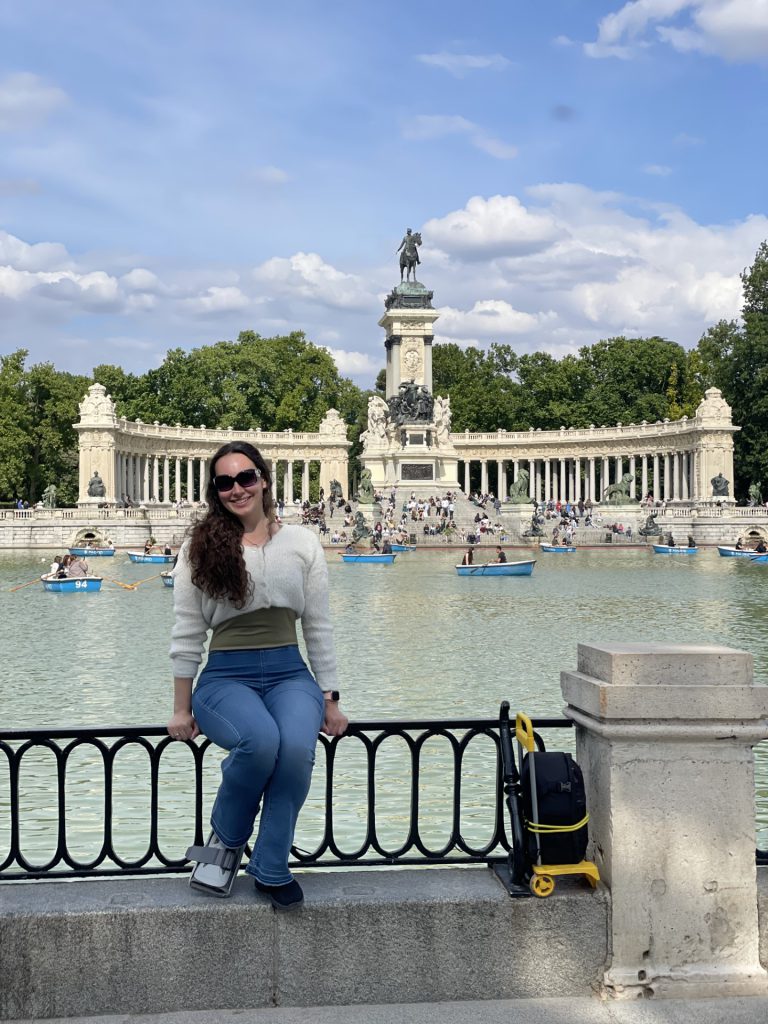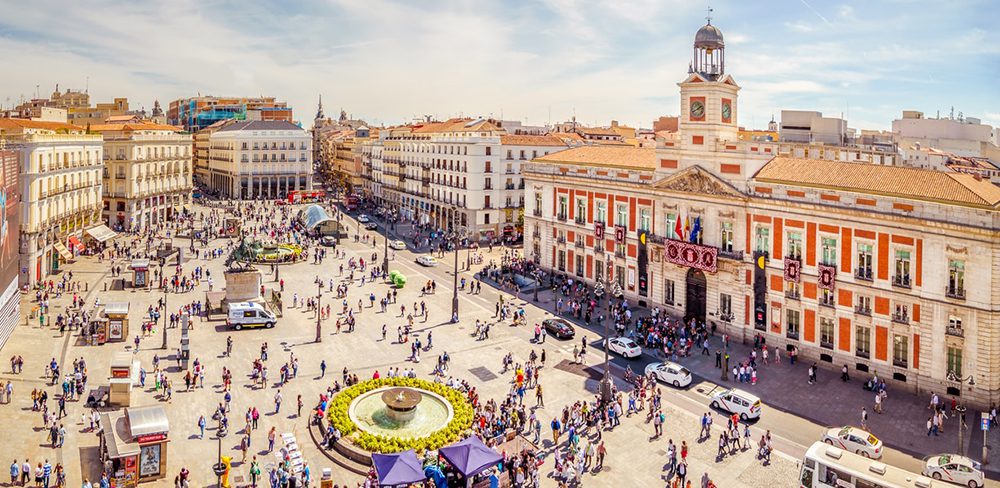by Cameron McKenzie
Valley of the Fallen

The group event of the day was a bus ride just outside of Madrid to visit the Valley of the Fallen, a monument commissioned by the dictator Franco to remember and entomb the bodies of fallen Nationalists during the Spanish Civil War. The enormous construction took 20 years to construct, between 1939 and 1959. Following its completion, Franco received significant political pressure to allow the remains from both the Republican and the Nationalist sides to be placed in the tomb. The bodies of the nationalists were removed from previous resting places without the consent of their families and haphazardly strewn within the memorial. Today the Valley of the Fallen is the center of political controversy. The political right wants the Valley to remain intact as a pilgrimage for Franco supporters. In their eyes, the stolen Republican bodies are a part of the monument, and the public should let sleeping dogs lie. The political left wants the remains of the entombed Republicans returned to their families to be reinterred. Some go so far as to want the monument’s deconstruction as it represents the brutality and suppression the Spanish people faced under Franco’s regime. Several families have petitioned the Spanish government to recover loved ones from the Valley, but it is nearly impossible to separate and identify the remains of all who lie within.
Our guide, Javier, held the monument in higher esteem than any of its visitors from UMass Lowell. Though very knowledgeable about the Valley of the Fallen construction and its religious and political significance, Javier could not keep his admiration for the memorial from coloring his tour. The monument takes € 2,000,000.00 to maintain and receives 200,000-400,000 visitors annually. Despite this funding amount, Franco’s tribute to the Civil War is falling into disrepair. Inside, water leaks from the ceiling, and water damage stains the stone walls. Buckets are unceremoniously scattered throughout the interior to catch falling drips. Due to the controversy and growing disapproval of the shrine, the Spanish government refuses to dedicate additional funds to the Valley’s restoration.
The Valley of the Fallen is carved into the side of a mountain just outside Madrid. The crucifix adorning the top of the monument is the tallest ever built, standing over 50 meters high. Inside the chapel is the largest mosaic in Europe, utilizing over 5 million individual tiles. This stunning piece of art is miraculously undamaged thus far by the mountain’s water infiltrating the tomb.
The Metro

The Valley of the Fallen was an important monument to visit. However, this journey out of the city took only a couple of hours, and the rest of our Saturday students had free to explore Madrid. A couple other students and I chose to visit Retiro Park, an enormous park in the city’s center. To get there, we took the metro. When I began this trip, I was two days out of a cast for a broken and sprained ankle. My doctors had wanted me to remain in the cast and on crutches for an additional two weeks, but I had countries to visit and cities to see. I would not recommend such actions to any cripples not adept at disregarding physician advice. Our days in Madrid consisted of walking on average 8 miles a day. The city of Madrid itself is not particularly disability friendly. I could complain about the cobblestone roads or the lack of outdoor seating for rest breaks. However, my main exasperation is with all the false advertising of accessibility in the metro stations.
Luckily, I was able to manage the stairs, albeit slowly. There would be glass doors at the bottom of the stairs descending into the metro station. One of these doors would invariably be labeled with a wheelchair icon and have a button to press for automatic opening. How on earth would a wheelchair ever reach that door to be able to use it? Some stations did have elevators for people with disabilities to access the underground platforms, but at more than one station, these lifts were out of order. When exiting the trains, there would sometimes be blue handicap signs illuminating the way to what one would assume would be an accessible entrance. These entrances often terminated at another staircase to the street level.
Retiro Park

Upon reaching the park, everyone from the city had come to spend their Saturday afternoon here. The main paths were so crowded it was impossible not to travel with the flow of traffic. Musicians played various instruments from the benches lining the roads, and magicians attracted crowds to see their street performances. By the pond at the center of the park, there is a large fountain. Since the city is in a drought, only a small amount of water spouted. In front of the fountain, a local dance troupe performed a hip-hop piece with hundreds of onlookers. These kids ranged in age from about ten to twelve. Despite their young age, I was captivated by their committed moves and synchronized choreography. When the dance routine concluded, Olivia and I made our way around the pond to the row boat rentals. Some of our classmates had discovered the pond boats earlier in the week and had a fantastic time. We got to the skiff rentals to find a line of awaiting boaters stretching a quarter of the way around the massive pond. There was a separate line for people who had made reservations in advance, and neither line was moving. We decided to return to the boats on a weekday when the crowds had to be smaller.
One of the things I loved about Retiro Park was the open grassy areas for people to lay out in. The sun was shining, and the temperature was 74 degrees, so Olivia and I found an open space and stretched out in the sun. From this vantage point, we watch people go about their day. In Spain, people have really well-behaved dogs. More importantly, the dogs are beautiful, and it was hard to resist running up to each one of them and giving them pets. Though sitting in a park and people-watching was not the high-speed, maximize-your-time pace we had been going at, it was really nice to slow down and appreciate even the simple things Spain had to offer.
